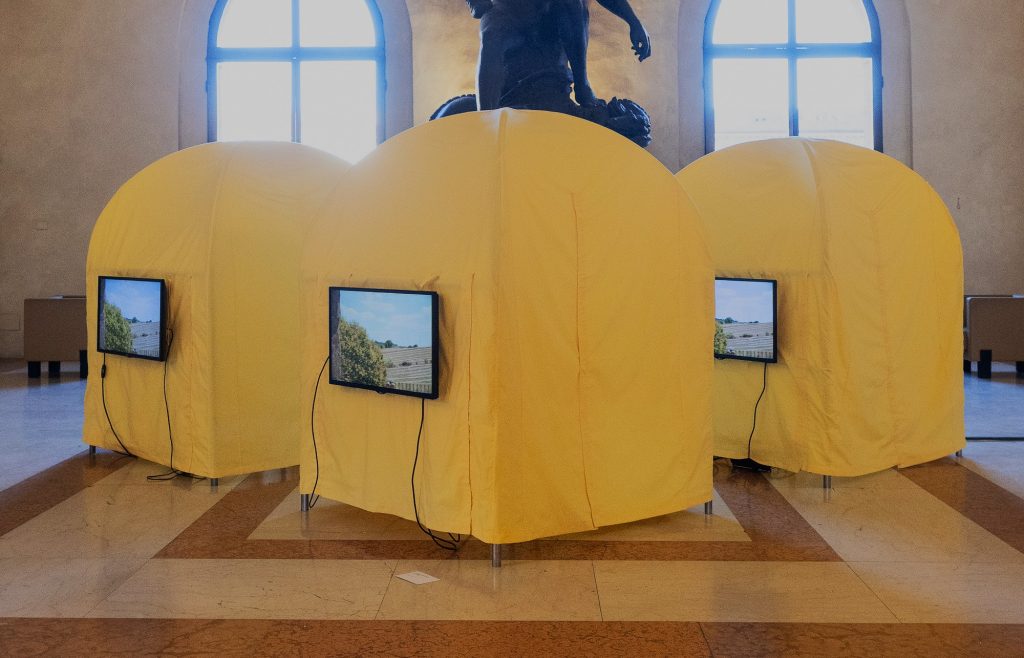
Compiler Machine | Raúl Silva [Portable tents, video, ink on paper]
Compiler Machine is a video installation formed through three portable tents, inspired by those historically used by telecommunications technicians to work in underground access chambers in cities. The design is based on photographed images from the Telefónica archives in Spain, which document the use of these tents in the mid-1980s. The structures were used to protect workers during cable maintenance – especially for safety reasons, and to signal the presence of technical work in progress in public spaces.
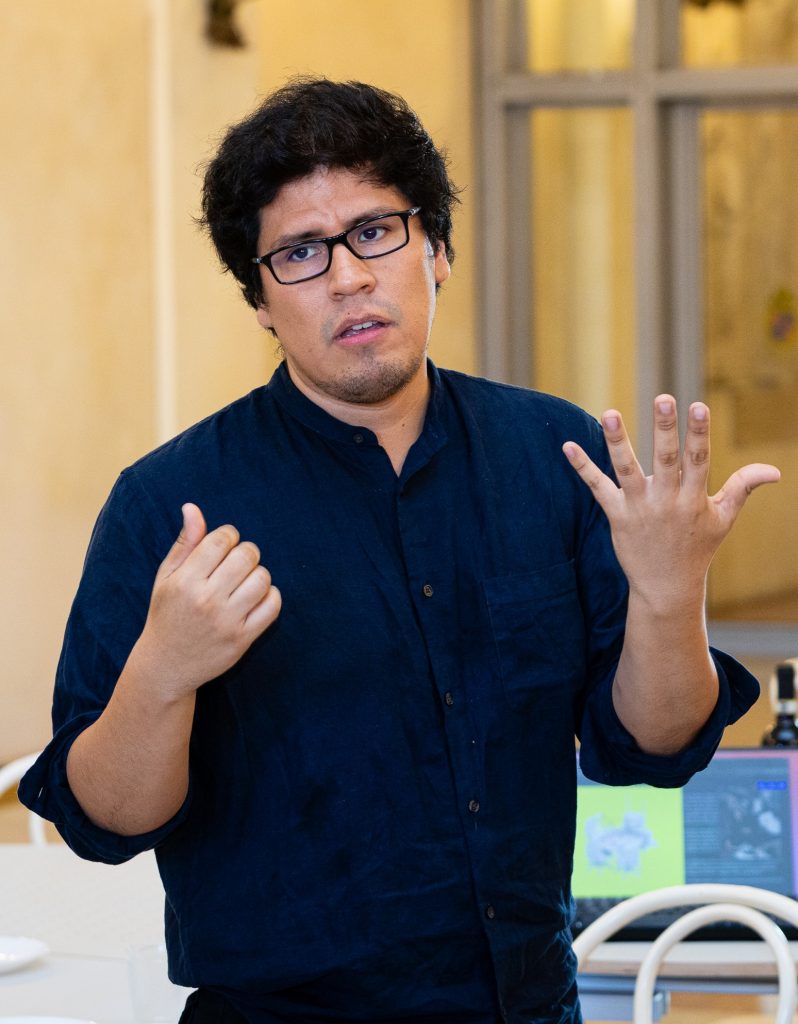
Each tent displays a synchronized video shot in a documentary style that tells the story of a telecommunications technician currently living on the outskirts of Madrid. Through his voice, the narrative presents a reading of the peri-urban landscape through layered histories of logistics, from telecommunications to contemporary big tech infrastructures. His anecdotes, brought together over several interviews in 2025, relay an inter-subjective reading on logistics and the histories of maintenance, care, and daily dedication that sustain their functionalities.
The project as a whole, developed over the past 18 months through interviews and archival research in Galicia, Santander, and the Basque Country, intertwines historical inquiry, ethnographic research, and speculative imagining to explore the past and future of information circulation through the lens of infrastructure and labour.
The illustrations accompanying the installation are based on archival research of telecommunications advertisements carried out by La Compañía Telefónica Nacional de España(CTNE) between the 1930s and 1990s. In his analysis, Silva identified three major shifts in the visual culture of telecommunications publicity: from depictions of technical infrastructure, to imagery evoking portals and metaphysical transport, and finally, to a rhizomatic sense of immaterial hyper-connectivity that characterizes much of today’s media landscape. The artist critiques these visual archetypes by developing a telecommunications publicity of a not-so-distant future, where infrastructure and logistics take precedence over immateriality, and where the primary subject is the data materiality, rather than its abstract origin or destination.
The methodology of Silva’s practice hinges on both archival work, aesthetic analysis, and the organization of focus groups, and on the ground field activities with communities of workers in Toledo, Madrid, and Vigo.
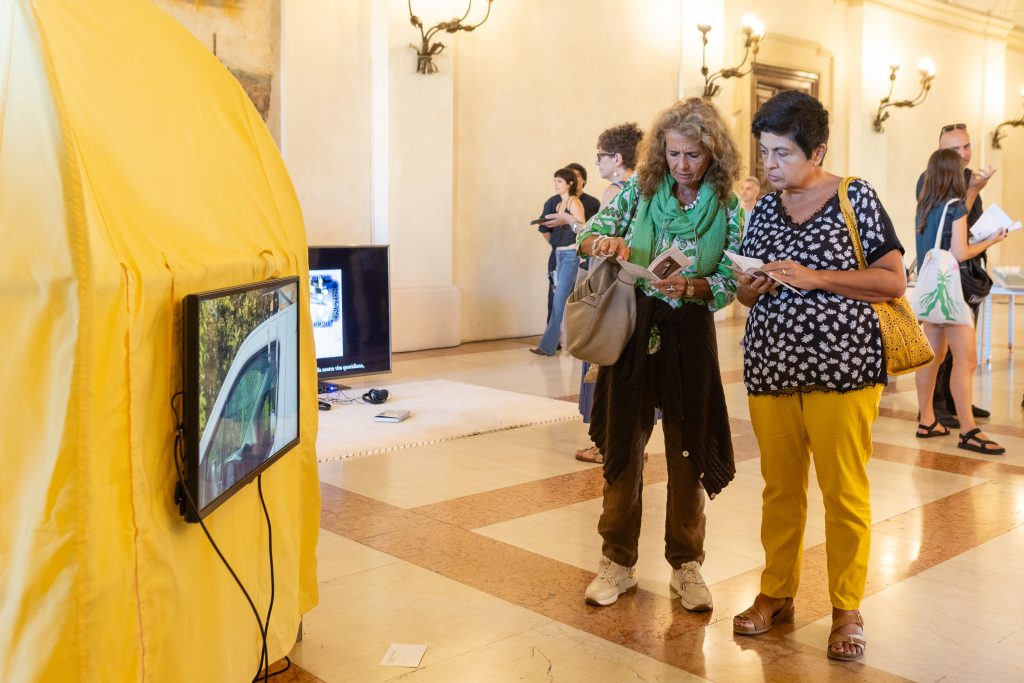
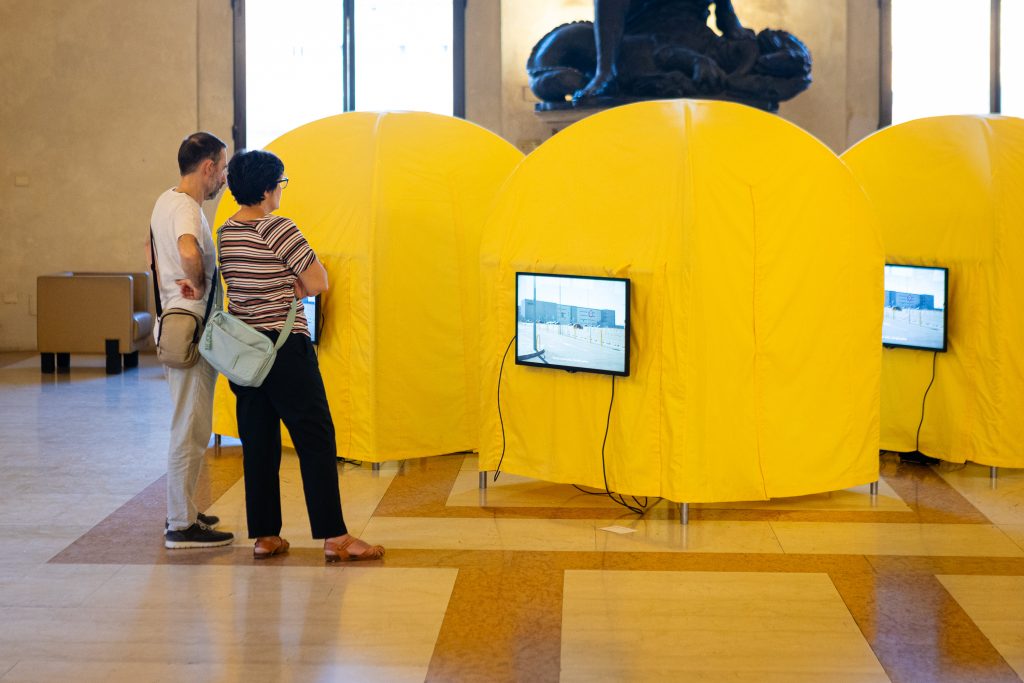
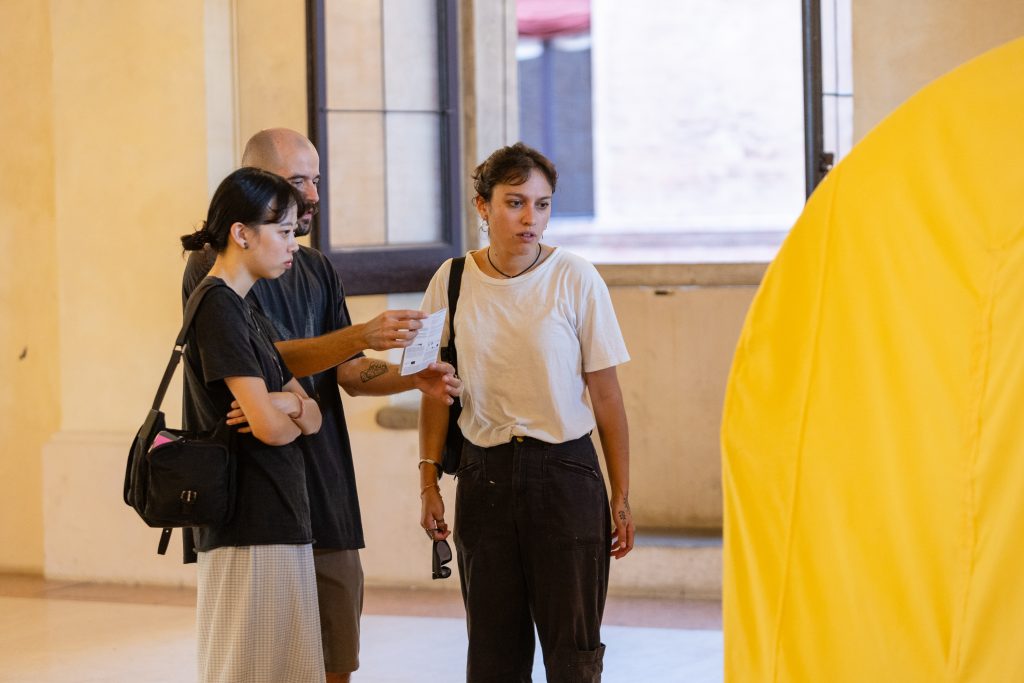
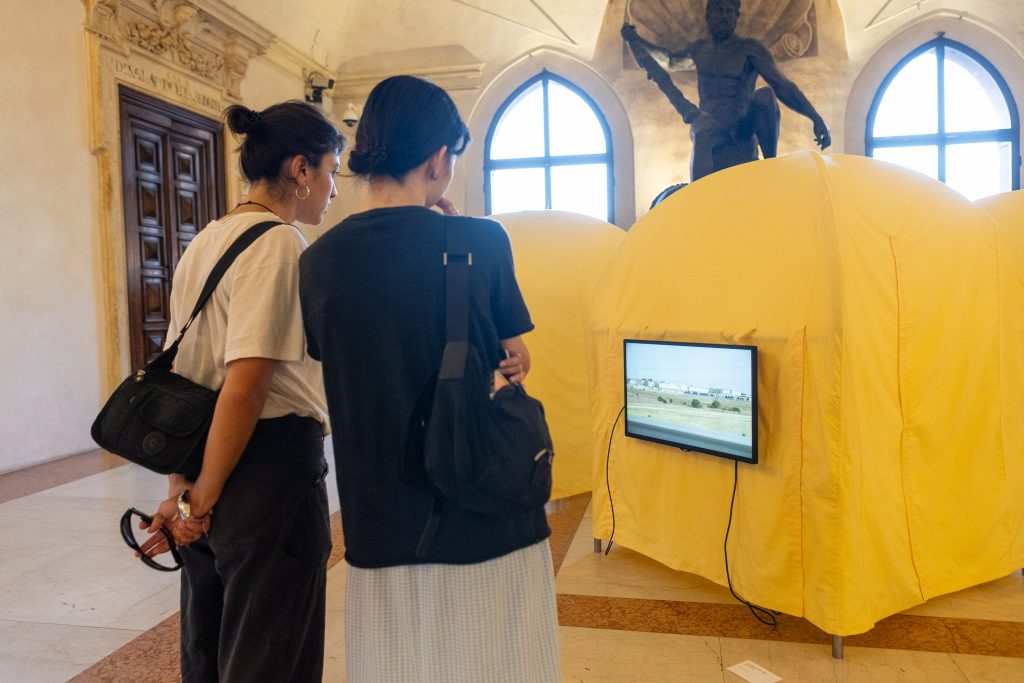
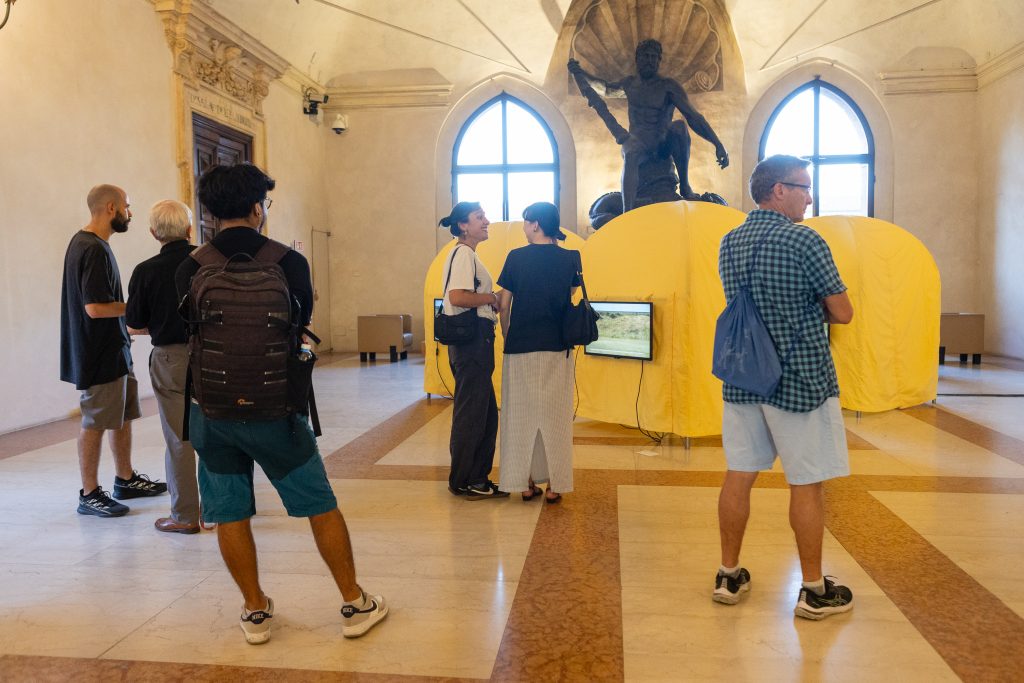
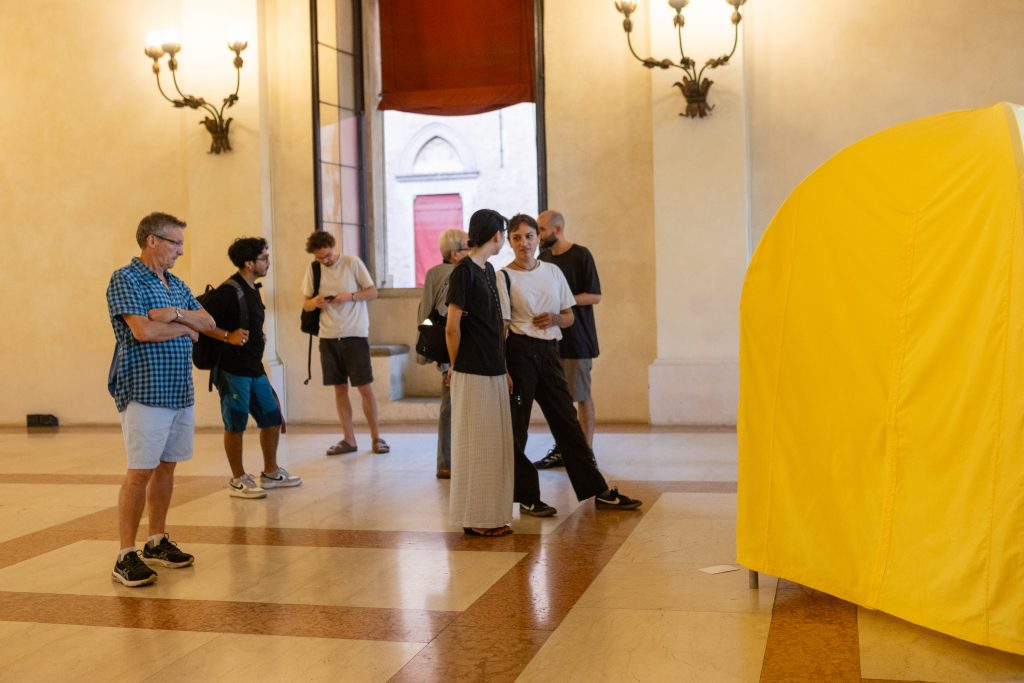
Photos by Massimiliano Donati, Fondazione IU Rusconi Ghigi
Share on Facebook Share on Twitter Share on Pinterest